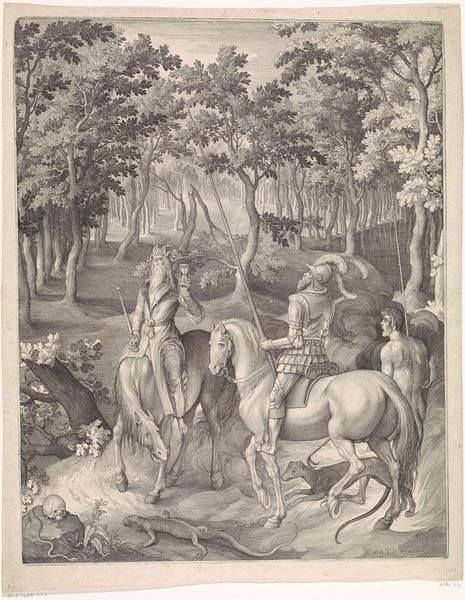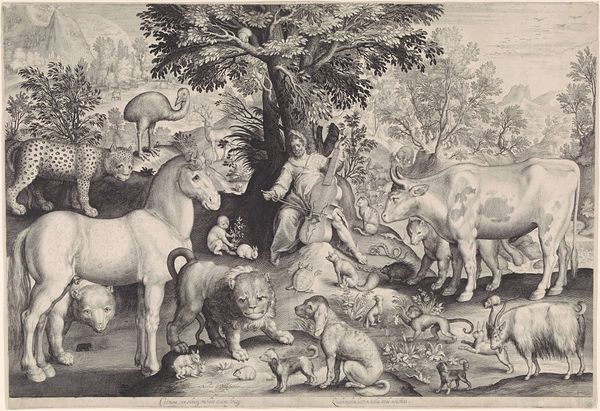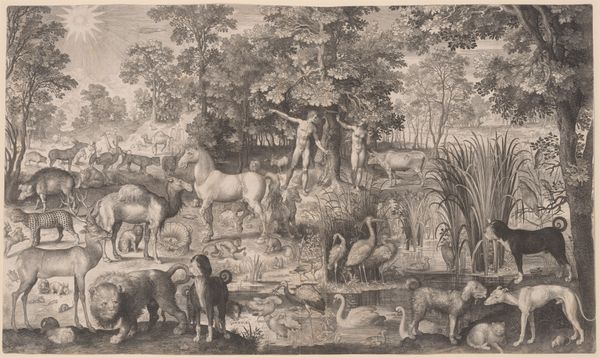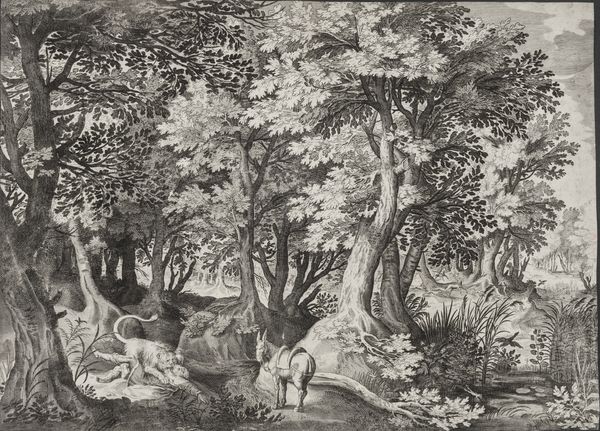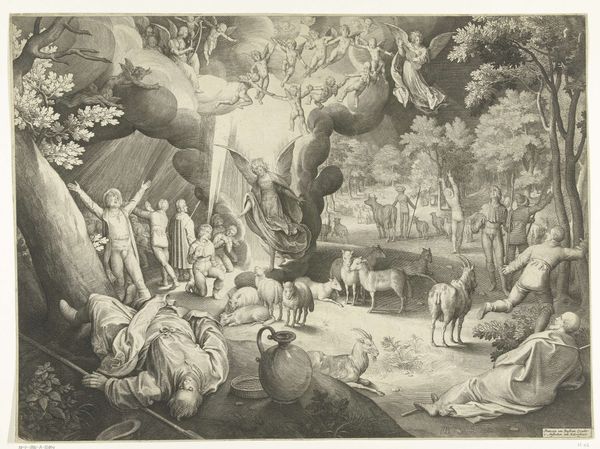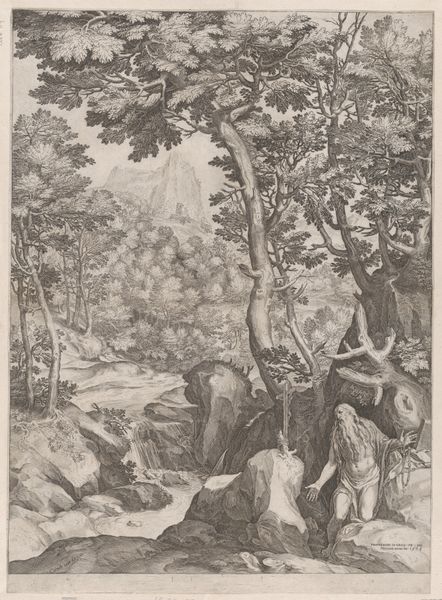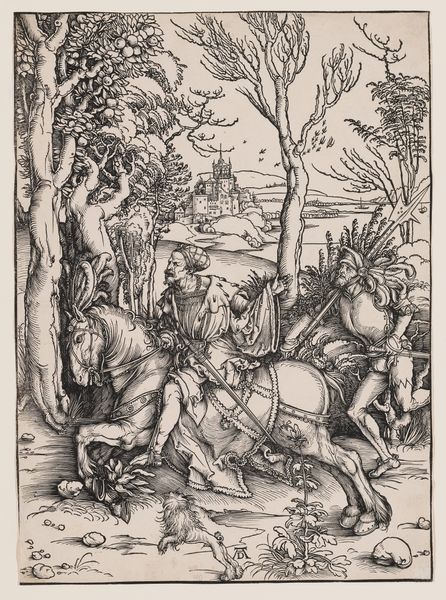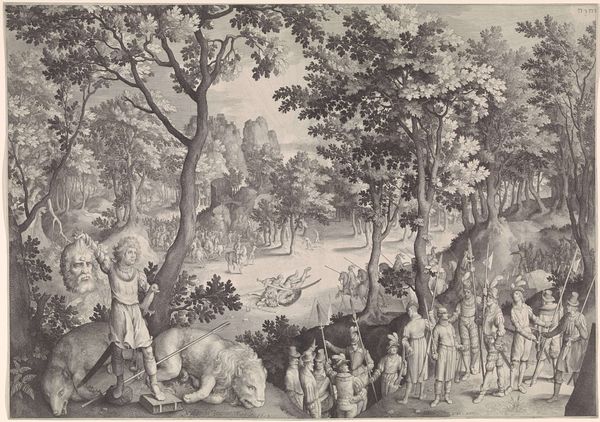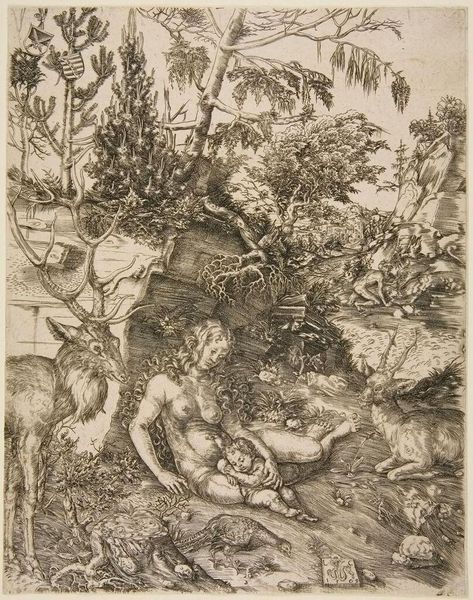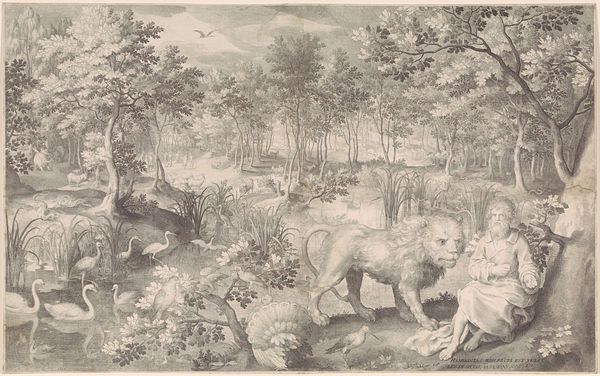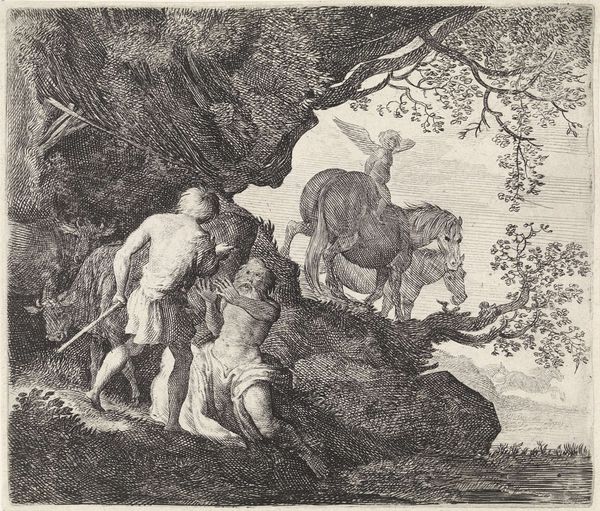
print, engraving
#
pencil drawn
#
narrative-art
# print
#
landscape
#
figuration
#
pencil drawing
#
northern-renaissance
#
engraving
Dimensions: width 462 mm, height 709 mm
Copyright: Rijks Museum: Open Domain
Curator: Here we have Nicolaes de Bruyn’s engraving, H. Hubertus, dating from 1614. It's currently held in the Rijksmuseum. Editor: The composition immediately strikes me as rather somber. It’s a very grey scene overall. I mean, that level of detail using solely an engraving technique...you can almost feel the dense woodland pressing in. Curator: The piece depicts the legend of Saint Hubertus, a nobleman who, while hunting on Good Friday, saw a vision of a crucifix between the antlers of a stag. This transformative experience led him to convert to Christianity and eventually become the patron saint of hunters. Editor: Ah, that accounts for the figure kneeling before the deer. Given the labour required for engravings at the time, especially ones this intricate, who do you think would have been the primary audience for something like this? Curator: Well, engravings such as these were frequently circulated amongst the literate upper classes. They served not only as works of art but also as tools for moral instruction, popularizing religious stories and courtly virtues, reflecting, of course, the era’s sociopolitical power structures. Editor: Right, and let's consider the materiality. Engravings were reproducible, allowing the image and its implied values to disseminate widely beyond those who could afford painted works, which inevitably shifts artistic production's sphere of influence. Curator: Exactly. And notice how de Bruyn used the landscape to heighten the dramatic impact. The depth of the forest and the positioning of the figures contribute to a powerful sense of revelation. The way the dogs are drawn suggests even *they* sensed the holy presence, creating a very spiritual moment. Editor: It makes one consider the complex intersection of hunting—a traditional aristocratic pastime rooted in practical provision and the maintenance of social hierarchies—and divine intervention as perceived or portrayed through this particular visual medium. And, beyond religion and class, how that translated into the construction of individual identities in 17th-century society. Curator: It really invites us to examine how art, even then, mediated ideas about morality, faith, and social order, particularly considering printmaking’s relatively wide reach and access. Editor: A somber reflection of faith shaping materiality, social perception and purpose then. Curator: Indeed, an artwork rich with historical context and continuing resonances about personal values to the social frameworks around them.
Comments
No comments
Be the first to comment and join the conversation on the ultimate creative platform.
